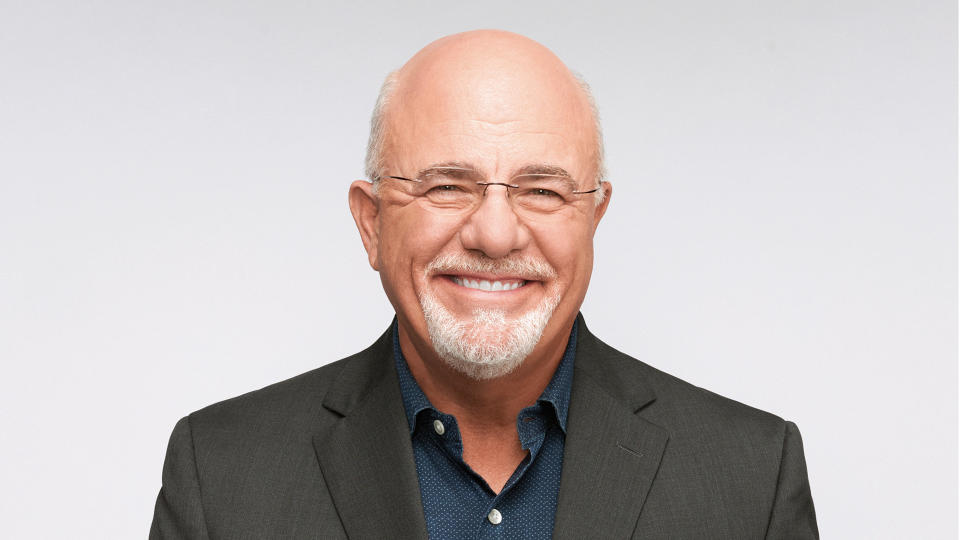If You Invested $10K in These Companies With Dave Ramsey, You’d Be Nearly $16K Richer

Unlike many finance experts and investors, Dave Ramsey does not recommend investing in S&P 500 stocks. You won’t see names like Apple or Amazon in his portfolio — at least not directly. Rather, according to an article at RamseySolutions.com, he advises investing 15% of your income into tax-advantaged retirement accounts like 401ks, IRAs, or Roth IRAs.
Check Out: Charlie Munger: Why 95% of Investors Have No Chance of Beating the S&P 500 Index
Read Next: 4 Genius Things All Wealthy People Do With Their Money
He advises choosing accounts that invest in mutual funds because of the diversification they provide. Within those investment accounts, choose an equal mix of four types of funds: growth and income, growth, aggressive growth and international.
RamseySolutions.com stated that 8 out of 10 millionaires invest in their company’s 401(k), while 75% of millionaires also had retirement accounts outside what their company offered.
If you followed Ramsey’s advice a decade ago, putting just $10,000 in a collection of mutual funds, you would have amassed more than $15,000 right now.
One finance forum revealed a retirement plan election form for a Ramsey Solutions employee. Let’s assume that Ramsey also invests in these funds, since they follow his best practices for investing.
We chose the $10,000 figure based on the median income in the U.S., which is $59,384, according to SoFi. We rounded that up to $60,000, and then calculated 15%, which is $9,000. Finally, we rounded that up to get an even figure, which would mean an investment of roughly $2,500 in each of these four funds.
Learn More: Here’s How Much a $1,000 Investment in Ford Stock 10 Years Ago Would Be Worth Today
Since it wasn’t possible to purchase fractional shares 10 years ago, we rounded off to create a diversified portfolio split evenly four ways.
1. Growth Fund of America
In 2014, Growth Fund of America is, as its name implies, a growth investment centered around U.S. companies, with up to 25% of its assets outside the U.S. Many of the equities in the fund will sound familiar. One-quarter of the fund is made up of technology stocks, with 15% in consumer discretionary companies. Other holdings include healthcare, industrial and financial companies.
Some of the largest cap stocks in the fund include Microsoft, Meta Platforms, Alphabet, and Amazon.
If you purchased 60 shares at $41.74 in 2014, you’d now have $4,312.20.
Price in 2014: $41.74
Price in 2024: $71.87
2. Investment Company of America
This mutual fund has a history spanning eight decades and shows a 10-year return of 10.31%. The vast majority (nearly 90%) of its assets are held in U.S. equities, according to CapitalGroup.com. It is classified as a long-term growth and income investment.
Like Growth Fund of America, the Investment Company of America invests in IT, industrial, healthcare, financial, and communications, amongst other industries. The largest holdings include Microsoft, Broadcom, and Alphabet.
If you purchased 67 shares, worth roughly $2,500 in 2014, you’d have $3,787.51 today.
Price in 2014: $37.07
Price in 2024: $56.53
3. New Perspective Fund
The New Perspective Fund fulfills Ramsey’s requirements for international holdings, with investments in 273 companies based across 27 countries, according to CapitalGroup.com. Fifty percent of its holdings are in U.S. equities and 45% are in non-U.S. equities. Top equities include companies in IT, healthcare, and the industrial market, and include Microsoft, Novo Nordisk, and Meta.
If you invested in 68 shares in 2014, you’d have $4,212.60 today.
Price in 2014: $36.51
Price in 2024: $61.95
4. American Balanced
American Balanced might be considered the long-term growth stock and the least risky investment in the collection. By focusing on high-quality stocks, the fund offers security and slow growth.
Some of the largest companies in the fund include Microsoft, Gilead Sciences, and Canadian Natural Resources.
If you invested in 103 shares in 2014, you’d have $3,507.15 today.
Price in 2014: $24.33
Price in 2024: $34.05
More From GOBankingRates
I've Secretly Put Us in Serious Debt: How To Break the News to Your Spouse
This is The Single Most Overlooked Tool for Becoming Debt-Free
This article originally appeared on GOBankingRates.com: If You Invested $10K in These Companies With Dave Ramsey, You’d Be Nearly $16K Richer

 Yahoo Finance
Yahoo Finance 